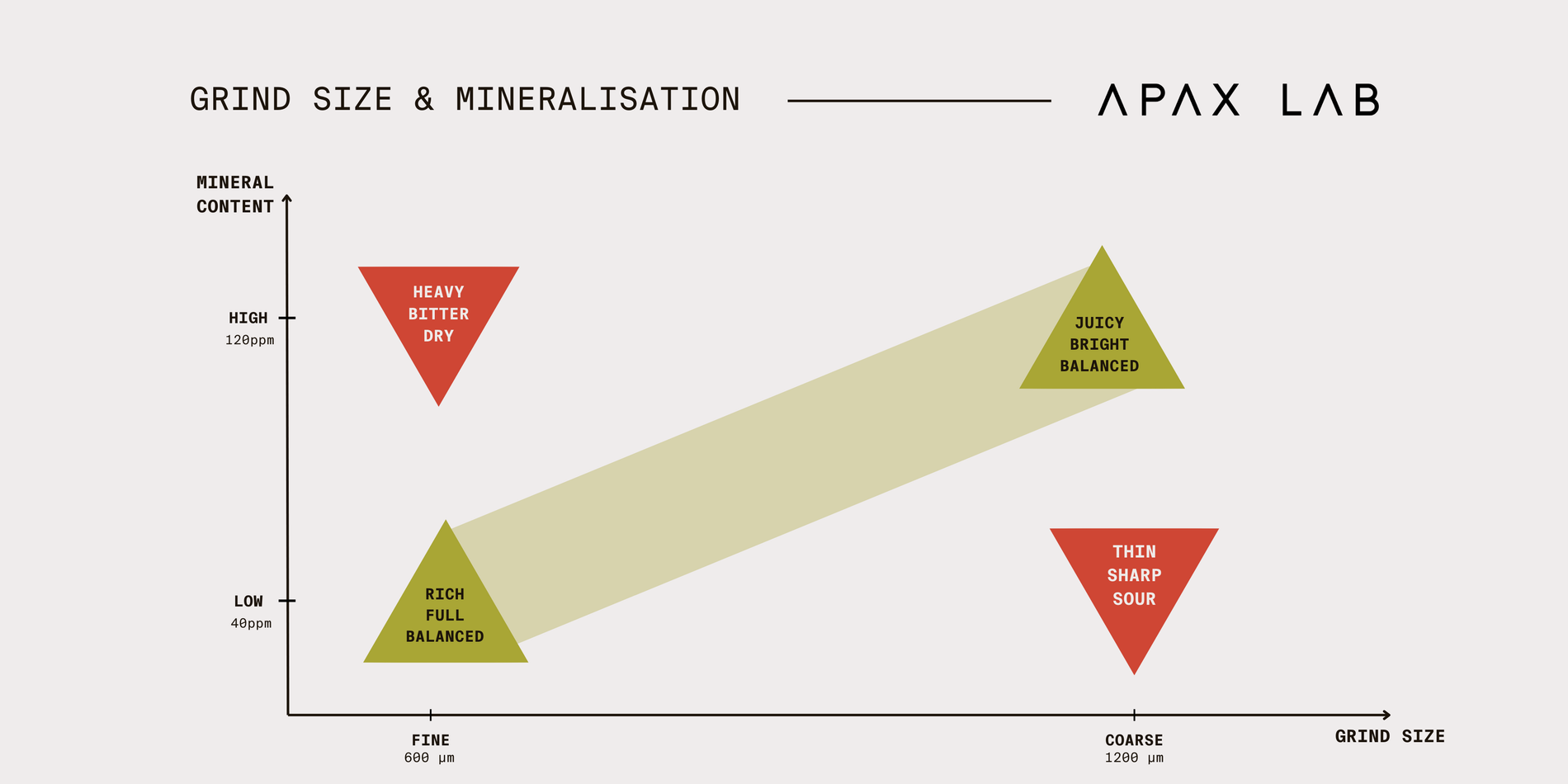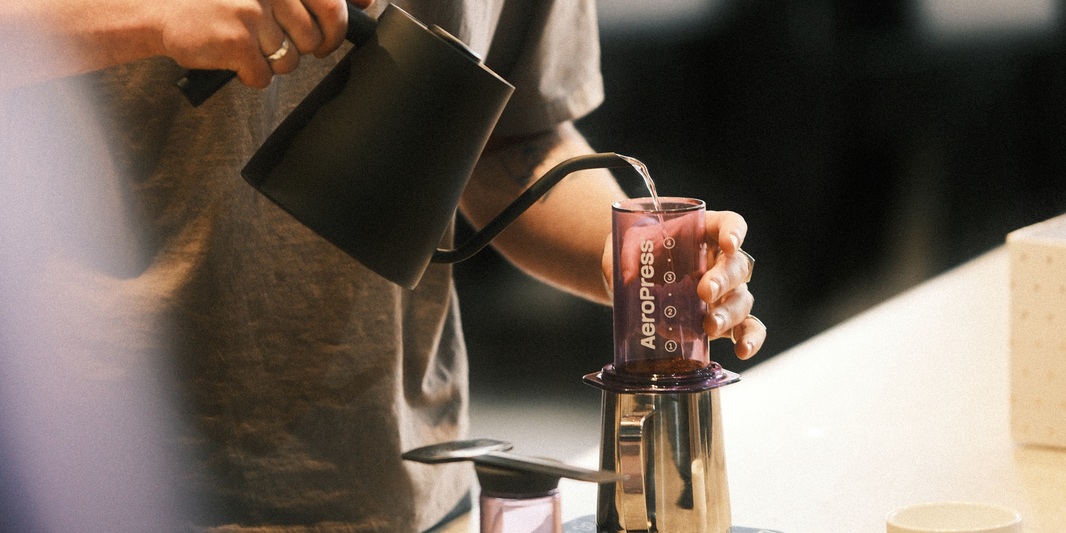When we talk about water for coffee, most people think about extraction. We’ve all heard that minerals in water “pull more flavour out” of the grounds. But through years of experiments and countless tastings, we believe the reality is a little different.
Minerals may not significantly change how much is extracted — instead, they change how we perceive flavour, texture, and balance once the coffee hits our palate. And when you connect this with grind size, you start to see a fascinating correlation that can help any barista or home brewer make better coffee.
The Role of Grind Size in Coffee
Grind size is one of the most powerful levers in brewing.
Fine grind → more surface area, faster extraction, thicker body, often more bitterness and dryness, lower perceived acidity.
Coarse grind → less surface area, slower extraction, lighter body, higher perceived acidity, sometimes overly sharp or thin.
In simple terms: fine makes coffee heavier, coarse makes it brighter.
The Role of Water Minerals in Coffee
Now, let’s look at water for coffee, and more specifically, minerals.
Calcium → boosts body and weight, but can add dryness.
Magnesium → enhances sweetness, acidity and clarity.
Bicarbonates (HCO₃⁻) → reduces acidity, making coffee taste flatter, sometimes chalky.
Overall mineral level (TDS) → higher TDS tends to round acidity and increase perceived body; lower TDS makes flavours sharper and clearer.
The key here is: minerals don’t change how much coffee is extracted, but they change how we taste and perceive it.
The Correlation: Grind Size Meets Water Minerals

Here’s where it gets interesting.
We’ve observed that:
When people grind finer, they tend to get better results with softer water (low mineral content).
When people grind coarser, they often get better results with harder water (higher mineral content).
Why? Because minerals and grind size balance each other out at the sensory level.
- Fine grind = heavy body, dryness, lower acidity
→ Softer water reduces body/dryness (less Ca²⁺), boosts clarity and acidity (less HCO₃⁻).
- Coarse grind = thin body, sharp acidity
→ Harder water adds weight (Ca²⁺), buffers harshness (HCO₃⁻), and rounds the flavour.
It’s less about “minerals extracting coffee” and more about minerals tuning how we perceive what’s already in the cup.
Visualising the Balance
Imagine grind size and water like two dials on a stereo system:
Grind = the track itself. Fine grind plays the bass-heavy version, coarse grind plays the light and treble-focused version.
Water = the speakers. Mineral-rich water boosts the bass, while softer water sharpens the treble.
When the track and the speakers are in harmony, you hear (and taste) the music as it was meant to be. Get them mismatched, and it sounds distorted.
Here’s a simple framework:
- Fine + Soft water → Bright, sweet, balanced
- Fine + Hard water → Heavy, bitter, dry
- Coarse + Soft water → Thin, sharp, sour
- Coarse + Hard water → Fuller, rounder, easier to drink
Why This Matters for Baristas and Home Brewers
Understanding the interaction between water for coffee and grind size gives you another tool to control flavour. Instead of chasing “perfect extraction,” think about balancing perception:
Brewing a fine, competition-style recipe? Try softer water for more clarity and sweetness.
Brewing a coarser batch brew or filter? Use more mineralised water to build body and tame sharp acidity.
This is also why at APAX LAB we design water recipes that aren’t just about hitting numbers, but that are about creating balance in the cup.






